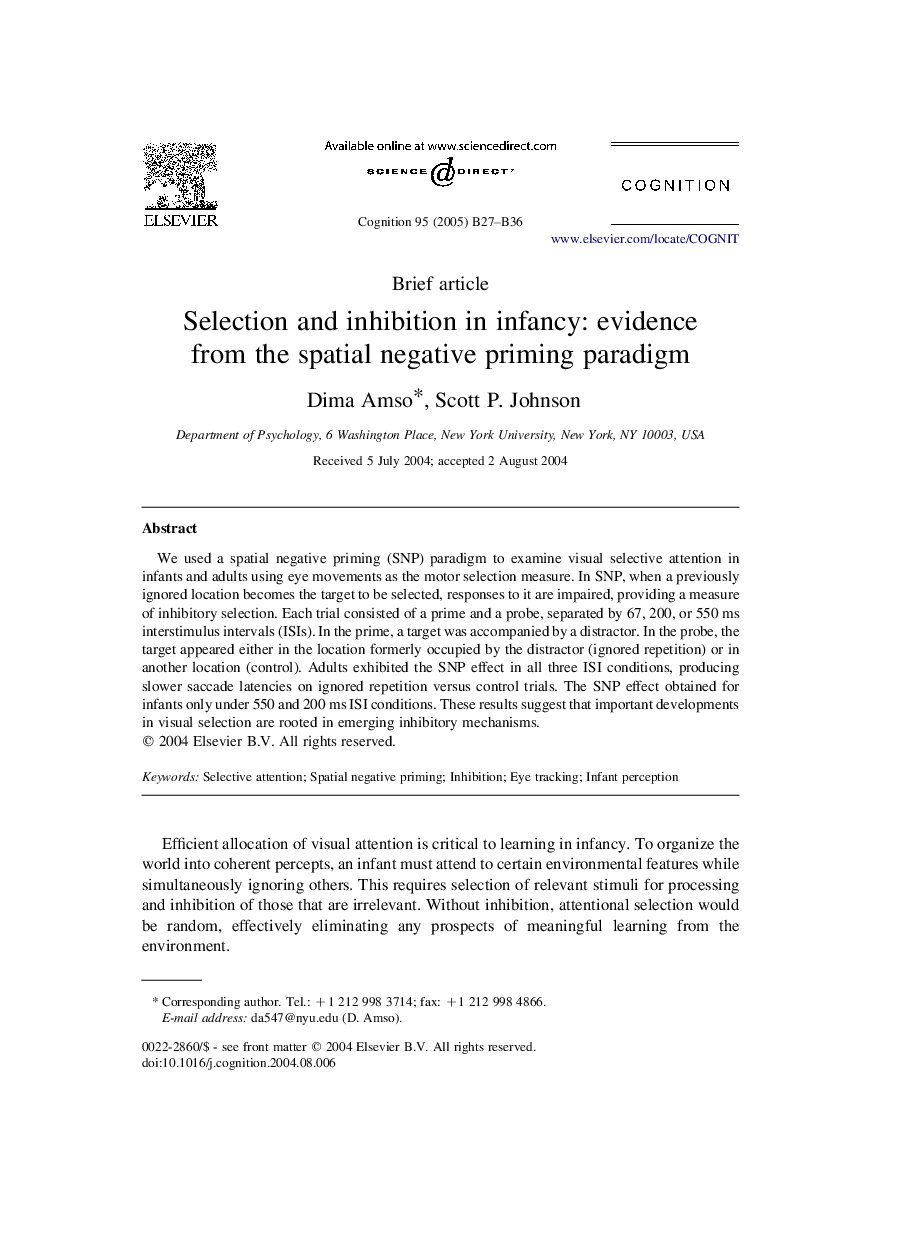| Article ID | Journal | Published Year | Pages | File Type |
|---|---|---|---|---|
| 10457820 | Cognition | 2005 | 10 Pages |
Abstract
We used a spatial negative priming (SNP) paradigm to examine visual selective attention in infants and adults using eye movements as the motor selection measure. In SNP, when a previously ignored location becomes the target to be selected, responses to it are impaired, providing a measure of inhibitory selection. Each trial consisted of a prime and a probe, separated by 67, 200, or 550Â ms interstimulus intervals (ISIs). In the prime, a target was accompanied by a distractor. In the probe, the target appeared either in the location formerly occupied by the distractor (ignored repetition) or in another location (control). Adults exhibited the SNP effect in all three ISI conditions, producing slower saccade latencies on ignored repetition versus control trials. The SNP effect obtained for infants only under 550 and 200Â ms ISI conditions. These results suggest that important developments in visual selection are rooted in emerging inhibitory mechanisms.
Related Topics
Life Sciences
Neuroscience
Cognitive Neuroscience
Authors
Dima Amso, Scott P. Johnson,
